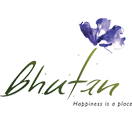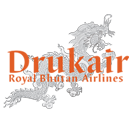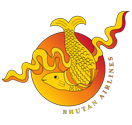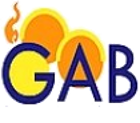Luxury Tour
Quick Link
Useful Links
Included in this Tour
All meals, tea and snacks, complementary bottled water in car, hotels, transport, guide, government levy, visa fee, entrance fees, permits and sightseeing. On trek includes – sleeping tents, dinning tents, toilet and shower tents, toilet seats, mats, duffel bags, cooking utensils, all meals, guide, trek chef assistants and horses.
Not Included in this Tour
Flight tickets, insurance, tips, drinks and beverages, sleeping bag on trek, laundry, internet, phone and other bills of personal nature.
Tour Program
8 Days / 7 Nights
Bhutan is known for its diversity, we believe in offering our clients the best we can. And in doing so, we go beyond the contemporary. One of which is taking you to the heart of the people. Bhutanese people are known for its hospitality and simplicity. They cherish in sharing the cultural and the daily life experiences to their visitors.
Day 1: Paro Arrival Drive to Thimphu
During the flight over to Paro, you’ll be able to see some of the highest peaks such as the legendary Mount Everest, Kenchenjanga and Makula. Upon arrival you’ll be met by our representative who will accompany you to during your tour.
Drive to Thimphu through the road that zig – zags following the river for one hour or more. You can make numerous stops on the way to enjoy the beautiful rice fields; forest and hills dotted with stupas and prayer flags.
Visit centenary Farmer’s Market is a two story building with about 400 stalls that provides farmers from around the country the opportunity to display their produce and people a chance to support the local agriculture. Vendors from throughout the region starts arriving on Thursday and Friday, and remain till Sunday night. The best time to explore the market is within these three days when the rush of trade is going on. It is also a great way to get acquainted with the locals and learn about the ingredients of a Bhutanese diet. Also watch the residents’ horde the market, choosing the best of the season’s product.
In the evening visit Trashichhodzong, Built in the 17th century, this dzong is the summer residence of the central monastic body headed by the Je Khenpo (chief spiritual leader). The king’s office is also located inside this dzong. The woodwork and the paintings are among the finest in the country. You may take pictures in the courtyard.
Free time in the town.
Overnight stay in Thimphu.
Day 2: Thimphu Sightseeing and Golf in Afternoon
After breakfast, drive about 45 minutes north of Thimphu and then hike to the Tango Buddhist Institute, which will take about 2 hours round trip. Tango is located at a place considered sacred from times immemorial. In the year 1689 AD, the monastery was built by the Gyelse Tenzin Rabgyel, the 4th Desi (temporal ruler of Bhutan). Today, the monastery serves as the largest Buddhist institute in the country. It is also the seat for the young reincarnation of the master who built the monastery (Gyelse Tenzin Rabgyel).
In the afternoon, You will play Golf at Bhutan’s only commercial golf course.
Overnight stay in Thimphu
Day 3: Thimphu to Gangtey
After breakfast drive to Gangtey on the way stop at Dochula pass (3150m), enjoy the panorama of the Bhutan Himalayas. Here you can spend some time walking around and photographing the 108 Druk Wangyel Chortens, Built in 2004 to “celebrate the stability and progress that His Majesty has brought to the nation,” this hill of 108 religious monuments in the middle of the pass reflects Bhutan’s spiritual and artistic traditions.
As we retrace our journey back to Punakha, you can make numerous stops on the way to visit villages, enjoy nature and to take pictures of local people on the road.
In Wangdue, take a short hike to Rinchengang village for cultural experiences and continue towards Gangtey.
This part of drive is one of the most scenic; you will be crossing streams, waterfalls, prayer wheels turned by water, yaks with their herders, remote and picturesque villages and lots of birds.
As we approach Pelela pass (3420m/10825ft), you will get the first glimpse of Black mountain ranges. In olden days it was used as border between east and west. Before reaching the pass, we will take right towards the valley of rare and famous Black Necked Cranes. First stop is at the village of and Gangtey (30000m), followed by Gangtey Gompa.
The villagers are said to be descendants of about 50 gomchen or lay monks who settled there long time ago. Overnight stay at Gangtey.
Day 4: Phobjikha valley sightseeing
After breakfast drive Lawala pass, hike from Lawala pass to Gangtey lodge for around 2 hours, along the rhododendron forest and yak herders pasture, you can see the spectacles 360 view of Gangtey valley and the mountains around the valley.
Afternoon visit the beautiful village and take a look around the Nyimapa School of Gangtey Gompa. This is the biggest of its kind in western Bhutan. Then,if you are good, hike down to the valley to soak up the stunning landscape also known as the Valley of the Rare Black-Neck Cranes. Overnight Hotel: Gangtey
Day 5: Gangtey to Punakha
Continue your drive towards Punakha and take a short hike to Chhi- med (means no dogs) Lhakhang in the picturesque valley, to visit the temple of Bhutan’s foremost saint, the Lama Drukpa Kuenley, popular known as the Divine Madman.
Visit Punakha Dzong. Built in 1637 between the confluence of the Po chu (male river) and Mo chu (female river), this fortress monastery is the winter residence of Bhutan’s spiritual leader, the Je Khenpo or Head Abbot, and the central Monk Body comprising of over 350 monks. Later in the afternoon hike to Khamsum Yulley Namgyel for around 2 hours round trip the temple was built by Her Majesty the Queen Mother in the late 20th century. This temple is dedicated for the welfare of the Kingdom and for a long and prosperous life of our Druk Gyalpo. The temple is the epitome of the finest Bhutanese craftsmanship and artistic traditions. It is located in the countryside; a 30-minute drive from Punakha Dzong will bring you to the base of the hill on which the temple stands.
Overnight hotel: Punakha
Day 6: Punakha to Paro
Visit Paro Rimpong Dzong, The original Paro dzong dates back to 17th century, built by Shabdrung Ngawang Namgyel, the man who unified Bhutan, but then it was burnt down in 1907 and was rebuilt in the same year with the same architectural design. Currently it is the head quarter of the district headed by the head administrator and the monastic body with about 200 monks, free time in the paro city. Visit national National museum, the watchtower or the Ta- Dzong was built in 17th century to guard the Paro Rimpong dzong (fortress) below. It has the collection of rare stamps on display. After visiting the museum you can enjoy the Zuri hike for about 1 hour or more which starts from Ta Dzong and stop at Hotel Uma. Visit paro kychu Lhakhang, one of the oldest temple built by the first Buddhist king of Tibet in seventh century.
Overnight Hotel:Paro
Day 7: Hike to Paro Taktshang(Tigers Nest)
After breakfast, drive 20 minutes to the starting point in order to hike to Takshang Monastery (the “Tiger’s Nest”). Visited and sanctified by Guru Rimpoche, this place is one of the most venerated pilgrimage sites in the Himalayan world. Over the years, many great Buddhist masters have visited and mediated here. Later, in the year 1692 AD, the fourth temporal ruler of Bhutan built the monastery over the cave where Guru Rimpoche and his consort Khandro Yeshi Tshogyal mediated. The monastic complex clings to the rock towering 800 meters above the valley (2950 meters above sea level).
After visiting the monastery, stop at the teahouse cafeteria half way down for lunch.
For dinner you can visit a home stay, paro is famous for its Varity of food, dumplings either from meet or cheese, greens, datsi (cheese) and chili with different combination of vegetable and other ingredients. You can taste common Bhutanese dishes served with rice, such as pork, chicken, beef, and yak. You can learn the few Bhutanese dishes and taste how it works. Also try archery the national game of Bhutan at the home stay.
Try hot stone bath very to recover your body after trek. It is believed that the heat of the water, the minerals released from the rock, and the local herbs all combine to produce medicinal benefits for joint pains, hypertension, stomach disorders and arthritis.
Overnight Hotel: paro
Day 8: Drive to Paro Airport and Departure
Today we will bid fond farewell to this beautiful Himalayan country and take an early flight back to Singapore. We hope by now you would have made some friends and also kept many photos and beautiful memories of Bhutan! And we look forward to seeing you again in this beautiful land of endless Enchantments! Tashi Delek!
Further Details
All of our itineraries can be tailored to your requirements, allowing us to create the perfect holiday just for you. Contact us with your holiday ideas, no matter how big or small, and we’ll start planning your unique trip.Our tailor-made tours are designed by local Travel Specialists who investigate every aspect of the trip themselves, giving you a unique view of each destination.





